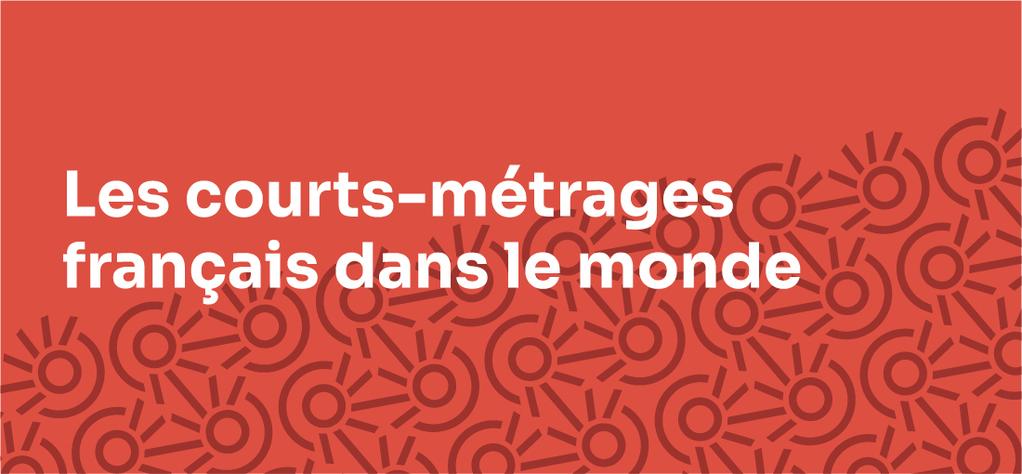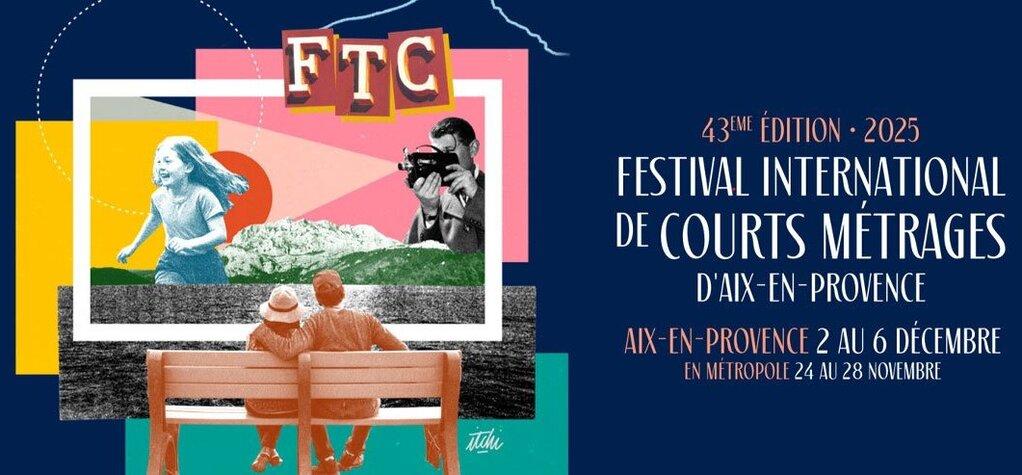The CNC and Unifrance met on Friday October 11, to present the consolidated sales and admissions figures for French films released abroad in 2023, as part of the 2023 Film Export Report. In attendance were Cécile Lacoue, the Director of Research, Statistics, and Strategy at the CNC, and Gilles Renouard, Director of the Cinema Department at Unifrance.
French cinema had a positive year overall on the big screen internationally in 2023. Nevertheless, we know that many changes have profoundly altered the ecosystem. As a result, the picture painted by the trajectory of French cinema in international cinemas in 2023 reveals different trends from those that characterized the late 2010s.
First observation: international admissions for French films were proportionally higher than for the overall market (+36.2% vs. +22.1%). Audience numbers for French productions continued to rise steadily, reaching 42.7 million. If we take out the results of the 11 blockbusters that attracted over 10 million spectators each between 2010 and 2019, we can see that an average of 47.2 million tickets were sold at foreign box offices each year during this period. From this angle, the 2023 total was only 9.7% below this level, and reached and exceeded the 40 million admissions threshold after three consecutive years relegated below it. In the 70 territories studied, two out of three admissions (67.4%) went to local productions in their own markets, while “only” one out of three admissions (32.6%) went to imported works, with France's share corresponding to 2.5% of the latter third. French films maintained and strengthened the position they held on the world market before the Covid-19 pandemic.
Second observation: platforms have changed the way films are consumed and thus distributed. For example, Ladybug & Cat Noir Awakening, the French leader of 2023 on big screens abroad (7.4 million admissions), was released directly on Netflix in the Americas, Oceania, and many Asian and European countries. This choice was made in the midst of the Covid-19 pandemic, when there was no way of predicting when the exhibition sector would actually resume its activity around the world. We note both that films are now circulating more via platforms and territories where on-demand practices are more deeply rooted. Here are millions of spectators who, five or ten years ago, would have been included in the theatrical release tally and not in results relating to performances on platforms.
Third observation: average admissions per film increased, and the gap between big and medium successes widened. Average admissions per film reached 33,600 in 2023, up from 25,500 in 2022, although they were well over 50,000 before 2019. In line with 2022, seven titles attracted over one million foreign moviegoers, and some 60 over 100,000. Nevertheless, compared with the past, half as many films sold between 500,000 and one million tickets, and the 10 biggest successes alone accounted for half of all tickets sold by French titles in 2023.
Fourth observation: the range of French films available for international theatrical release has never been so rich; it was mainly driven by French-language productions, with a strong emphasis on animation. In 2023, there were 1,269 films already in exhibition, including 287 new titles, and 3,211 new releases. Historic records! While the pandemic brought a halt to the steady increase in fresh titles, their presence in movie theaters increased from 2022 onwards. Audiences for French-language productions were back in force, with repeat ratios closer to – or much higher than – pre-pandemic levels than for French cinema as a whole (+6.9% vs. -26.6%). On the other hand, foreign-language productions stagnated, deprived of the flagship films that once attracted audiences of over five (or even 10) million each. Today, the torch seems to have been taken up by animation, voted the leading genre for the first time and attracting one in four viewers of French film worldwide in 2023. Its 27.7% annual share of total admissions was the highest ever! Comedy and drama completed the trio of the most popular genres (two-thirds of the films on offer and half of admissions), and continued to attract foreign movie fans. While we warned that arthouse audiences would desert movie theaters, we note that the former are back, with admissions for ranked French films exceeding their annual average for the decade. French cinema continues to rely on a rich and diversified range of genres and films to find international audiences, and comedies and dramas remained solid export bases, supported by the achievements of other genres – in 2023, by animation.
Fifth observation: Spectators for French films are becoming increasingly concentrated in Europe, and less and less in the other continents. Between 2010 and 2017 (excluding 2013 and 2016), half of all admissions for French films were generated outside Europe, while this trend has since been reversed and reinforced, reaching its historic peak in 2023, when 77.5% of tickets to French productions were sold in Europe. The fact that other regions often arrived on the big screen later than French productions, that they were released on platforms without going through the theatrical release window period, and the absence of the flagship English-language titles that peppered the 2000s and up to 2017, are all factors in this observation. Without forgetting that each foreign market is influenced by its own characteristics, dynamics, and post-Covid-19 trajectory – which has often triggered a determination to support and promote local production, making access to foreign titles more difficult. Forecasting and planning a film's international career has become even more complex. It is interesting to note that, in 2023, with the exception of the isolated case of Latin America, audiences for French films increased on all continents compared to the previous year, with peaks in Central and Eastern Europe (+73.2%) and Asia (+44.2%). One in three French film enthusiasts live in Eastern Europe – a first! Inevitably, the boom in this region, driven by animation and comedy, both popular locally, reduced the shares of other geographic zones compared with those recorded in 2022, with the exception of Oceania – which remained unchanged – and Asia – which strengthened slightly. Poland and Vietnam were among the foreign territories that offered a greater number of admissions to French films than in the past, taking on a new role as regional hubs. In 23 markets, audiences for French productions were higher than the 2017 to 2019 average, and in nine other territories, French cinema admissions lagged behind the local market.
2023 marked a return to normal for the 10 international festivals studied in this report, and France can boast some top-notch results.
The general desire was to restore festivals to their pre-pandemic role as launch pads, with organizers seeing public screenings as a priority for bringing films to audiences. These events continue to have a considerable impact on the film industry, and increasingly raise awareness of their essential role as a springboard for a whole typology of films that require this kind of event to kick-start their distribution and circulation. Particularly in 2023, film festivals highlighted cultural diversity by expanding boundaries in the various selections, with an increased number of productions from countries that were usually poorly represented, or not at all, through a rich range of works in a variety of cinematic forms, and by giving pride of place to emerging talent.
There's no denying that 2023 was a great year for France. Firstly, the number of French films directed by women rose to a record 39.5% of the total, beating the overall average for all nationalities. Secondly, the awards list reveals a diversified, multicultural range of French titles, featuring both established and emerging filmmakers. France won the Palme d'Or at Cannes, with Justine Triet's Anatomy of a Fall, which was a critical and public success both in France and abroad, and has continued racking up awards since its festival debut. Nicolas Philibert's On the Adamant, awarded the Golden Bear at the Berlinale, confirmed that documentaries have their place at festivals, as did the fine trajectory of Kaouther Ben Hania's Four Daughters, Œil d’or at Cannes. For the third year running, France had the most films selected (256, more than one in five), the most screenings (353, or one in four) and won the most awards (47), all nationalities combined. France presented more films than the United States at eight festivals, with a particularly strong presence at Cannes, Busan, the Berlinale, and Rotterdam. And 20 of the 50 titles selected by three to five festivals were of French nationality. This leadership would not be achieved and maintained over the years without taking into account the multicultural nature of French titles, as four out of five films were the fruit of co-productions between two countries on average, for a total of 81 foreign partner countries.
This report and all the market indicators implemented at Unifrance continue to monitor and analyze the presence, circulation, and consumption of French works abroad. Despite global admissions still below pre-pandemic levels, a changing geography of markets, and evolving consumer habits among viewers, French films retain a prominent place on the world stage.

Kaouther Ben Hania and the protagonists of Four Daughters at the Cannes Film Festival, 2023.
The main market indicators of French films on the international scene in 2023
In theaters:
- 42.7 million admissions and €271.4 million in box office revenues.
- 33.7 million admissions for majority-French productions and 34.1 million for those in the French language.
- 1,269 films in exhibition (including 287 new titles) and 3,211 new releases.
- Seven films topped the one million admissions mark and 68 clocked up more than 100,000.
- Eastern Europe (19.3 million) was the leading geographic zone in terms of audience figures.
In international film festivals:*
- 256 French films selected and 346 presentations.
- France remained the leading country in terms of number of films, presentations, and awards received.
- Two French films out of five were directed by a woman.
- One Palme d'or, One Golden Bear, and 45 other official awards.
* The 10 festivals studied: Bafici, Berlin, Busan, Cannes, Locarno, Rotterdam, San Sebastián, Sundance, Toronto, and Venice.
Since its first publication in 1994, the UniFrance annual report has monitored and analyzed the figures for French productions in theaters outside France each year, with its content enriched and expanded over the years. The report about French films on the international scene includes an overall analysis of their theatrical results, 70 country fact sheets (including some 15 with a mini SVOD fact sheet) and an analysis of the presence of films at international festivals. This annual report is unique among all national movie industries—no other nation is in a position to produce a comparable publication.
The 2023 report can be downloaded below (in French only)
Study
Unifrance - Bilan Cinéma 2023


































